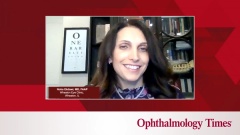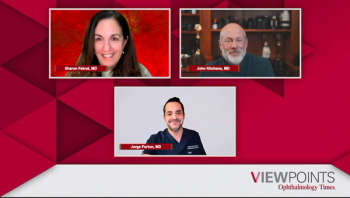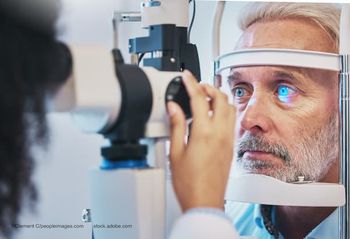
Myopia Management Approaches
Dr Noha Ekdawi outlines her comprehensive 3-pronged strategy for pediatric myopia management.
Noha Ekdawi, MD, FAAP: Just in discussing what my treatment management is for myopia. This is what I tell most parents. The first step is outside time. Really, that is the key to myopia management, is the environment. There’s always that 20-20-20 rule, for every 20 minutes of near work, look up for 20 seconds at 20 feet. That is a helpful guide. But I think just in general, changing the environment of your child is the best way. Just being outside and even reading a book outside, you get that natural tendency for seeing that bird fly by and the child just looks up. You don’t have to remember the 20-20 rule. I think it just happens naturally. I think kids are just happier being outside. That’s the key to why we think outside time works, right? It’s the dopamine levels rising and the child’s eyes not growing as fast, we think, and changing the total overall prescription for that child.
Of course, we think computer use and near work increases that. But when we discuss in our round table, it’s almost impossible to decrease the near work with school, being on screens all day. The child at kindergarten gets an iPad and then slowly goes up to a Chromebook, in junior high or high school, just depending on the district. But what we found in general in my clinic and most of the clinics around is that screen time has just increased drastically. That’s something to point out to the parents. A lot of parents always ask me, well, how much screen time is the right amount of screen time? Well, that’s difficult because the American Academy of Pediatrics had actually put out guidelines and we find that schools break those guidelines. Technically, when they get home, then there is no screen time left. You have to just make good commonsense adjustment. That’s the first thing I like to discuss. That is not age dependent; from the smallest 1-year-olds to the 18-year-olds, I discuss outside time as a very good way of stopping progression and actually, we think, stop myopia onset. That’s a conversation I have with every kindergarten exam that is required in the state of Illinois. If I see the child, I discuss outside time.
Then for myopia management itself. When the child comes in and as young as 3 years old, they’re already myopic, there is a conversation second to the outside time and the screen time of using low-dose atropine with me. I usually start low-dose atropine as young as 3 years old, if the parents are OK with that. I started at 0.025%. Again, I like that percentage because for my clinic and my patient base, and we discussed this a lot, I don’t tend to have adverse effects. When I go up to the 0.05%, I get lots of complaints of adverse effects. I’m still running kind of in the middle. I tend to not use 0.1% as much anymore, but I still don’t use a lot of 0.5%. [I am] always asked, what’s the highest you have gone to on low-dose atropine? Well, the highest I’ve gone is 0.1% actually. But that was in a very particular case of high progression. Both parents were very knowledgeable about it already on low-dose atropine, and [the patient] had been just consistently increasing. I have increased my dose up to that much. As long as there’s a good conversation that she will be dilated, do I give a bifocal at that point? Things like that need to be discussed at the higher ranges. But 0.025%, I find that I don’t need to do a bifocal or anything else. Maybe some darkening glasses for when they’re at recess outside, but that’s about it.
I will start as young as 3, and my max, usually I’d like to start it before they turn 13, but I’ve had some 13-year-olds come in and it’s just really patient dependent. If that 13-year-old is rapidly progressing, then I will again discuss low-dose atropine. There’s just so many factors with each kid, and it depends a little on axial length, family history. All those things have to play a role in it. And if the parents are interested; they have to want to stop progression or they won’t start any treatment at all.
My third step for my myopia control, is what I always call it, is the contact lens or now I use MiSight. That is my third step, just because in a 3-year-old, it’s very difficult to put a contact in. At 7, we start discussing MiSight, and I’ll be honest with you, not all 7-year-olds can get a contact lens in their eye. That’s why low-dose atropine tends to be my second step, even though it’s not FDA approved, whereas MiSight is. I tell the parents that, it’s just it’s easier to put an eye drop in every night than to do a MiSight contact. As soon as a child is able to do MiSight contacts, I do think that that’s a great third step. After we’ve done the outside time, then the low-dose atropine, then MiSight.
Those 3 are my combined therapies because I do think they likely have different mechanisms of action. I like to put in all the mechanisms together and hope that that really stops myopia progression.
Transcript is AI generated and edited for clarity and readability.
Newsletter
Don’t miss out—get Ophthalmology Times updates on the latest clinical advancements and expert interviews, straight to your inbox.
















































.png)


